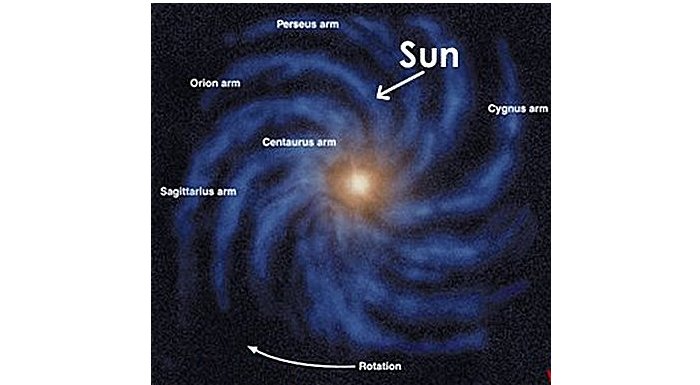Voynich Manuscript: Ancient Book Nobody Is Able To Read
AncientPages.com - The nature and origin of the manuscript have long remained a mystery. Few ancioent manuscripts have caused as much controversy and debate as the mysterious Voynich manuscript. Is it a hoax or a genuine book? It seems the verdict is still out on this puzzling manuscript.
This ancient medieval text is a cryptic document written by an unknown author.
Plenty of skilled cryptographers have studied the document and many attempts have been made to crack the code. Many experts have said it is impossible to decipher the medieval text, but maybe the term “impossible” is over-used by us humans?
Over the years, the Voynich manuscript has caused a lot of controversy and debate. This ancient medieval text is a cryptic document written by an unknown author.
Many skilled cryptographers have studied the document. Their attempts to break the code failed. Up to now, none of them has been able to crack the code.
It is worth mentioning that at the end of WWII the U.S. military passed some spare time encrypting ancient texts. They managed to decipher every text except the Voynich manuscript, which is written with an unknown script system.
Does the Voynich manuscript really contain a message? Are we unable to break the mysterious code? Is the book a deliberate hoax? Is it an encoded version of a known language or a totally invented language?
A new study suggests that the manuscript holds a genuine message.
Researchers say that while the text written on medieval parchment shows basic statistical patterns that bear resemblance to those from real languages, there are features that make the manuscript a hoax. The manuscript was named after Wilfrid M. Voynich, a Polish-American book dealer who found this manuscript in a chest in the Jesuit College at the Villa Mondragone, in Frascati in 1912.
He bought it from the Jesuits, and gave photographic copies to a number of experts to have it deciphered. None of them succeeded. Certain features in the illustrations, such as hairstyles for example, suggested that the book was produced between 1470 and 1500.
But by whom and why?
Inside the manuscript, which is 240 pages long, there was a 17th century letter, written by Johannes Marcus Marci of Cronland, a Bohemian doctor and scientist, rector of the University of Prague, and official physician to the Holy Roman Emperors.
The paper dated 1666, was addressed to Athanasius Kircher, a 17th-century German Jesuit scholar and informed that the manuscript was bought by Emperor Rudolph II in 1586.
During the 1600s, some scholars attempted to decipher the script. Then the mysterious manuscript disappeared for 250 years before Voynich discovered it.
Voynich was also eager to learn more about his new remarkable finding, but establishing the origin of the book and deciphering the code, was a much more complex task than he anticipated.
According to a theoretical physicist, Dr Marcelo Montemurro from the University of Manchester, UK, the "manuscript presents a complex organization in the distribution of words that is compatible with those found in real language sequences.
"We are also able to extract some of the most significant semantic word-networks in the text. These results together with some previously known statistical features of the Voynich manuscript, give support to the presence of a genuine message inside the book."
Dr Montemurro and his team used a computerised statistical method to analyse the text and focused on patterns of how the words were arranged in order to extract meaningful content-bearing words.
"There is substantial evidence that content-bearing words tend to occur in a clustered pattern, where they are required as part of the specific information being written," he explains.
"Over long spans of texts, words leave a statistical signature about their use. When the topic shifts, other words are needed. The semantic networks we obtained clearly show that related words tend to share structure similarities. This also happens to a certain degree in real languages."
Dr Montemurro argues that the hoax hypothesis cannot possibly explain the semantic patterns he has discovered. He believes it unlikely that these features were simply "incorporated" into the text to make a hoax more realistic, as most of the required academic knowledge of these structures did not exist at the time the Voynich manuscript was created.
"While the mystery of origins and meaning of the text still remain to be solved, the accumulated evidence about organization at different levels, limits severely the scope of the hoax hypothesis and suggests the presence of a genuine linguistic structure," scientists say in their paper.
Those who believe in the authenticity of the Voynich manuscript maintain that the script is far too complex to be a hoax. Skeptics on the other hand, suggest that the failure of the code breaking indicates there might be no code to decipher and no hidden message.
There is also a possibility that the manuscript is not a code, but rather an unidentified language and of course, as usual it is very convenient to dismiss certain uncomfortable findings as hoaxes simply because we do not understand their origin and meaning.
Copyright © AncientPages.com All rights reserved. This material may not be published, broadcast, rewritten or redistributed in whole or part without the express written permission of AncientPages.com
Expand for referencesReferences:
More From Ancient Pages
-
 Easter Island Secrets: Giant ‘Pukao’ Stone Hats Reveal That Rapa Nui People Were Not Warriors
Archaeology | Dec 22, 2017
Easter Island Secrets: Giant ‘Pukao’ Stone Hats Reveal That Rapa Nui People Were Not Warriors
Archaeology | Dec 22, 2017 -
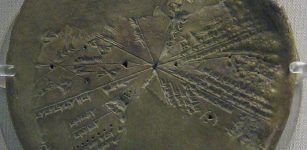 Assyrian King Ashurbanipal’s Great Library With Thousands Of Cuneiform Tablets
Civilizations | Dec 9, 2015
Assyrian King Ashurbanipal’s Great Library With Thousands Of Cuneiform Tablets
Civilizations | Dec 9, 2015 -
 Never-Before-Seen 3,000-Year-Old Paintings Of Egyptian Goddess Amentet Discovered Inside Coffin Of A Mummy
News | Apr 7, 2020
Never-Before-Seen 3,000-Year-Old Paintings Of Egyptian Goddess Amentet Discovered Inside Coffin Of A Mummy
News | Apr 7, 2020 -
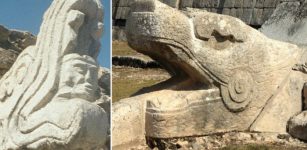 Kukulkan (Quetzalcoatl): Feathered Serpent And Mighty Snake God
Featured Stories | Feb 7, 2017
Kukulkan (Quetzalcoatl): Feathered Serpent And Mighty Snake God
Featured Stories | Feb 7, 2017 -
 Sun: Highest Cosmic Power Worshiped By Ancient People And Represented By Deities
Featured Stories | Apr 1, 2019
Sun: Highest Cosmic Power Worshiped By Ancient People And Represented By Deities
Featured Stories | Apr 1, 2019 -
 Ancient DNA Reveals Origin Of First Bronze Age Civilizations In Europe
Archaeology | May 8, 2021
Ancient DNA Reveals Origin Of First Bronze Age Civilizations In Europe
Archaeology | May 8, 2021 -
 Oldest Bead In America Discovered At La Prele Mammoth Site, Wyoming
Archaeology | Feb 13, 2024
Oldest Bead In America Discovered At La Prele Mammoth Site, Wyoming
Archaeology | Feb 13, 2024 -
 Ancient DNA Of Segorbe Giant Reveals A Brutal Event In Medieval Spain
News | Sep 26, 2021
Ancient DNA Of Segorbe Giant Reveals A Brutal Event In Medieval Spain
News | Sep 26, 2021 -
 Rhodogune Of Parthia Refused To Bath And Comb Her Hair Until She Subdued The Rebels
Featured Stories | Oct 7, 2019
Rhodogune Of Parthia Refused To Bath And Comb Her Hair Until She Subdued The Rebels
Featured Stories | Oct 7, 2019 -
 Mystery Of The Seven Sages In Ancient Myths And Legends
Featured Stories | Feb 20, 2016
Mystery Of The Seven Sages In Ancient Myths And Legends
Featured Stories | Feb 20, 2016 -
 Giant Meteorite Impacts Created The Continents – Evidence Found
Human Beginnings | Aug 12, 2022
Giant Meteorite Impacts Created The Continents – Evidence Found
Human Beginnings | Aug 12, 2022 -
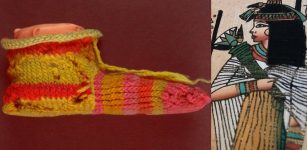 Ancient Egyptians Used Stripy Socks And May Have Invented Them
Ancient History Facts | Dec 5, 2018
Ancient Egyptians Used Stripy Socks And May Have Invented Them
Ancient History Facts | Dec 5, 2018 -
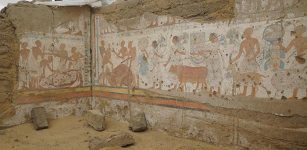 Tomb Of Pharaoh Ramesses II Treasurer Ptah-M-Wia Discovered In Saqqara
Archaeology | Nov 4, 2021
Tomb Of Pharaoh Ramesses II Treasurer Ptah-M-Wia Discovered In Saqqara
Archaeology | Nov 4, 2021 -
 Brahma: First God In Hindu Trimurti, Creator Of The World And All Creatures
Featured Stories | Apr 17, 2019
Brahma: First God In Hindu Trimurti, Creator Of The World And All Creatures
Featured Stories | Apr 17, 2019 -
 Mysterious Mummified Woman With A Christian Cross On Her Chest Dashes Hopes Of Finding First Russian Fortress In Yakutia
Archaeology | Dec 12, 2019
Mysterious Mummified Woman With A Christian Cross On Her Chest Dashes Hopes Of Finding First Russian Fortress In Yakutia
Archaeology | Dec 12, 2019 -
 Secrets And Lies: Spies Of The Stuart Era Played A Dangerous Game In The Shadows Of An Unstable Europe
Featured Stories | Nov 11, 2024
Secrets And Lies: Spies Of The Stuart Era Played A Dangerous Game In The Shadows Of An Unstable Europe
Featured Stories | Nov 11, 2024 -
 Aditi – Primeval Hindu Goddess Who Is Source Of All Living Beings
Featured Stories | Apr 3, 2021
Aditi – Primeval Hindu Goddess Who Is Source Of All Living Beings
Featured Stories | Apr 3, 2021 -
 Extraordinary Discovery Of 2,000-Year-Old Bronze Statue Rewrites Etruscan-Roman History
Archaeology | Nov 8, 2022
Extraordinary Discovery Of 2,000-Year-Old Bronze Statue Rewrites Etruscan-Roman History
Archaeology | Nov 8, 2022 -
 Two Elite Burial Chambers Dated To Middle Kingdom Uncovered In Beni Hassan Necropolis, El-Minya, Egypt
Archaeology | Aug 6, 2018
Two Elite Burial Chambers Dated To Middle Kingdom Uncovered In Beni Hassan Necropolis, El-Minya, Egypt
Archaeology | Aug 6, 2018 -
 2,000-Year-Old Historical Tombs Unearthed In Close Vicinity To Ancient City Of Laodicea
Archaeology | Jan 23, 2020
2,000-Year-Old Historical Tombs Unearthed In Close Vicinity To Ancient City Of Laodicea
Archaeology | Jan 23, 2020



